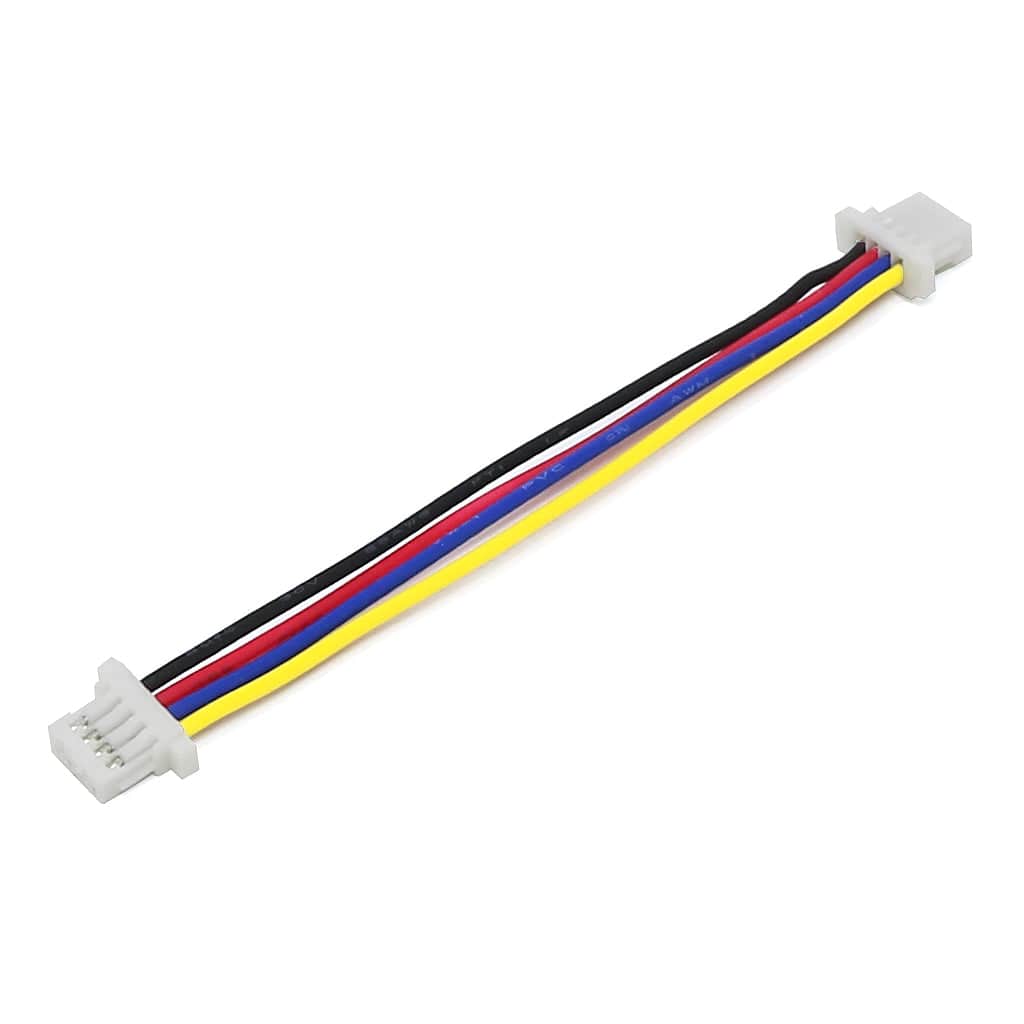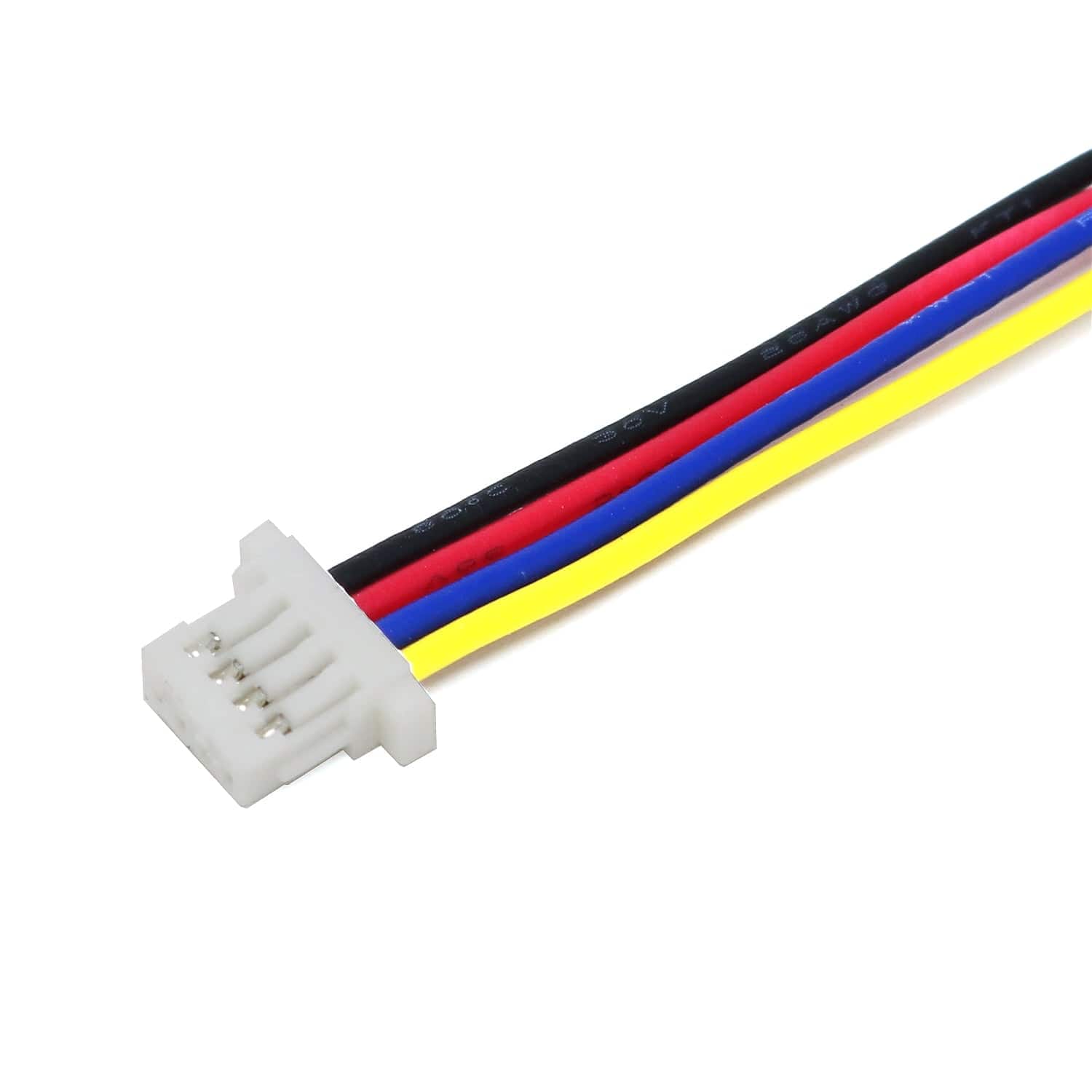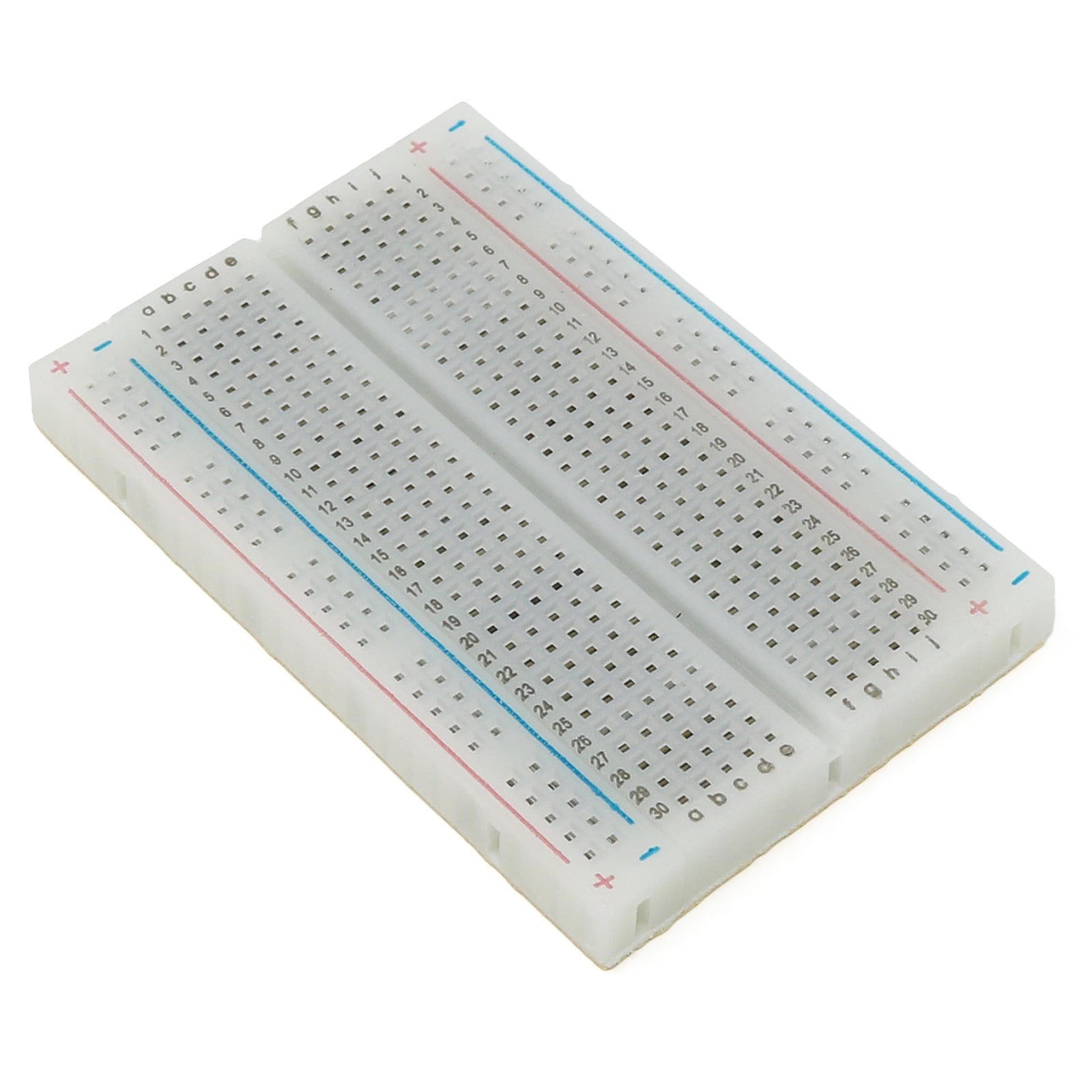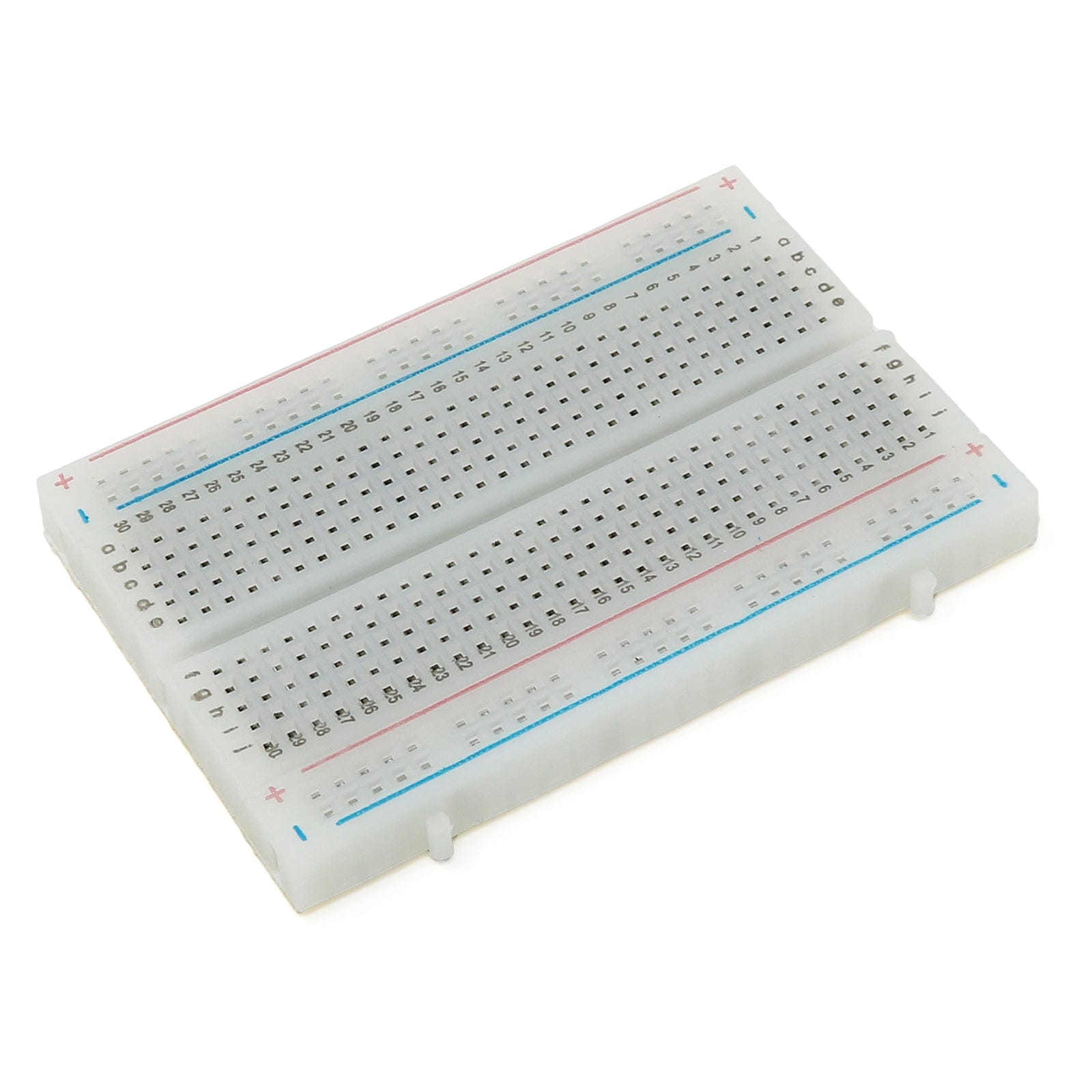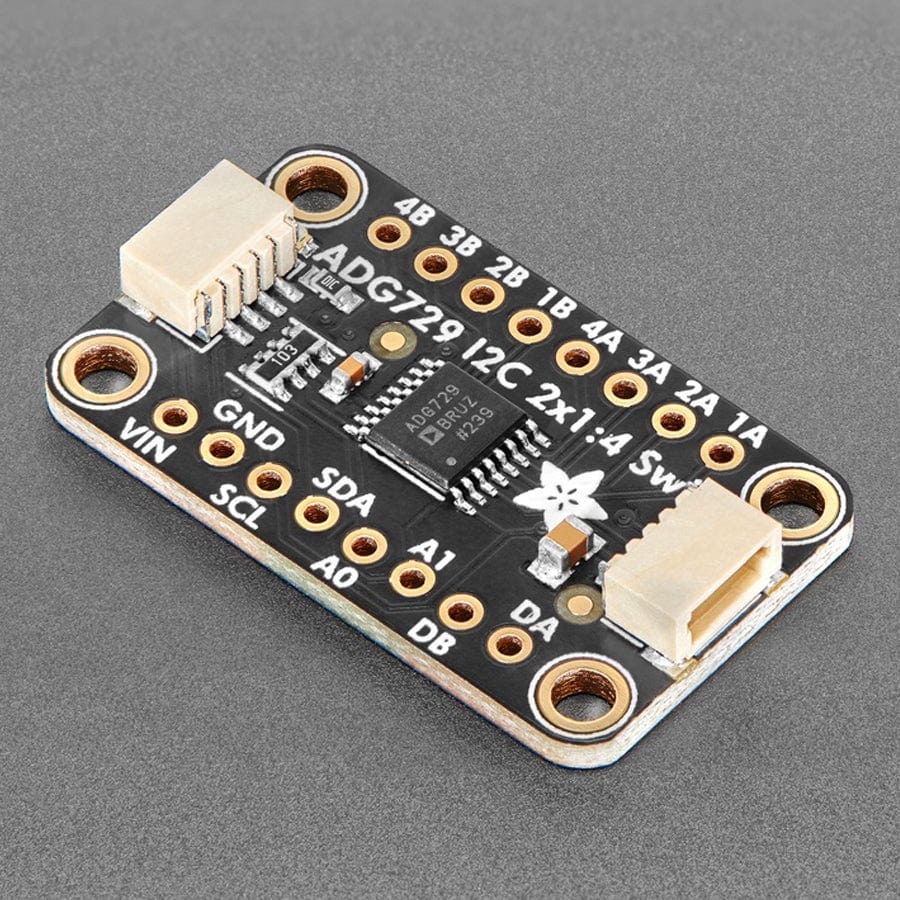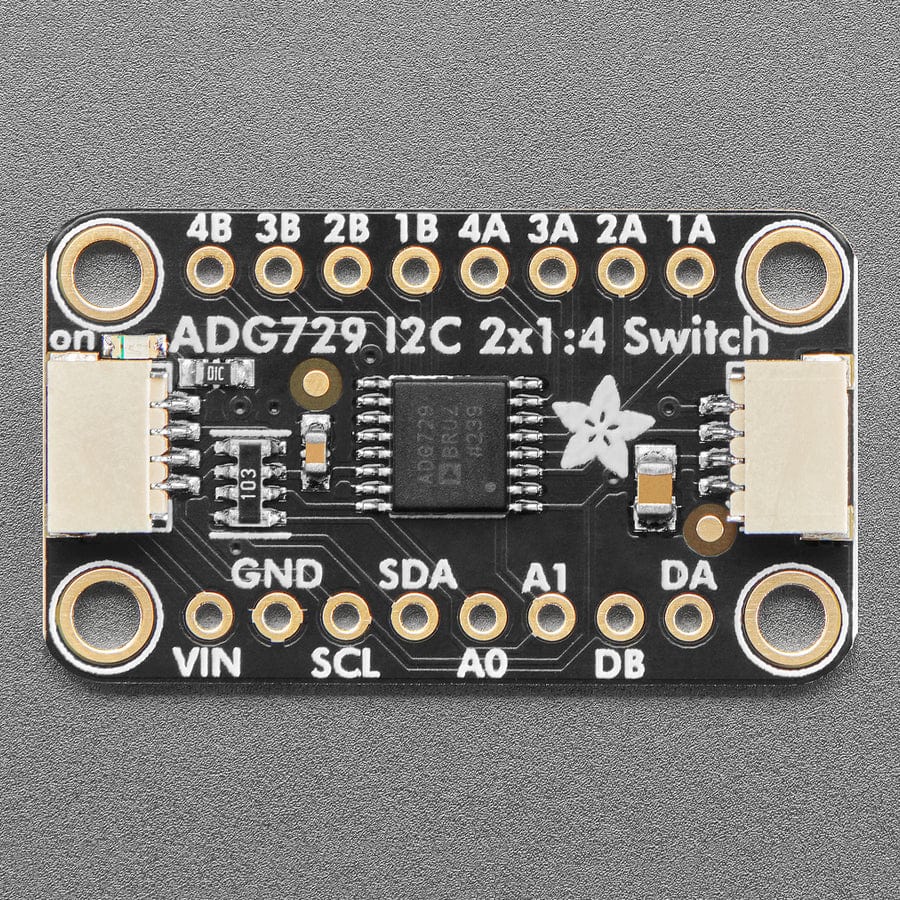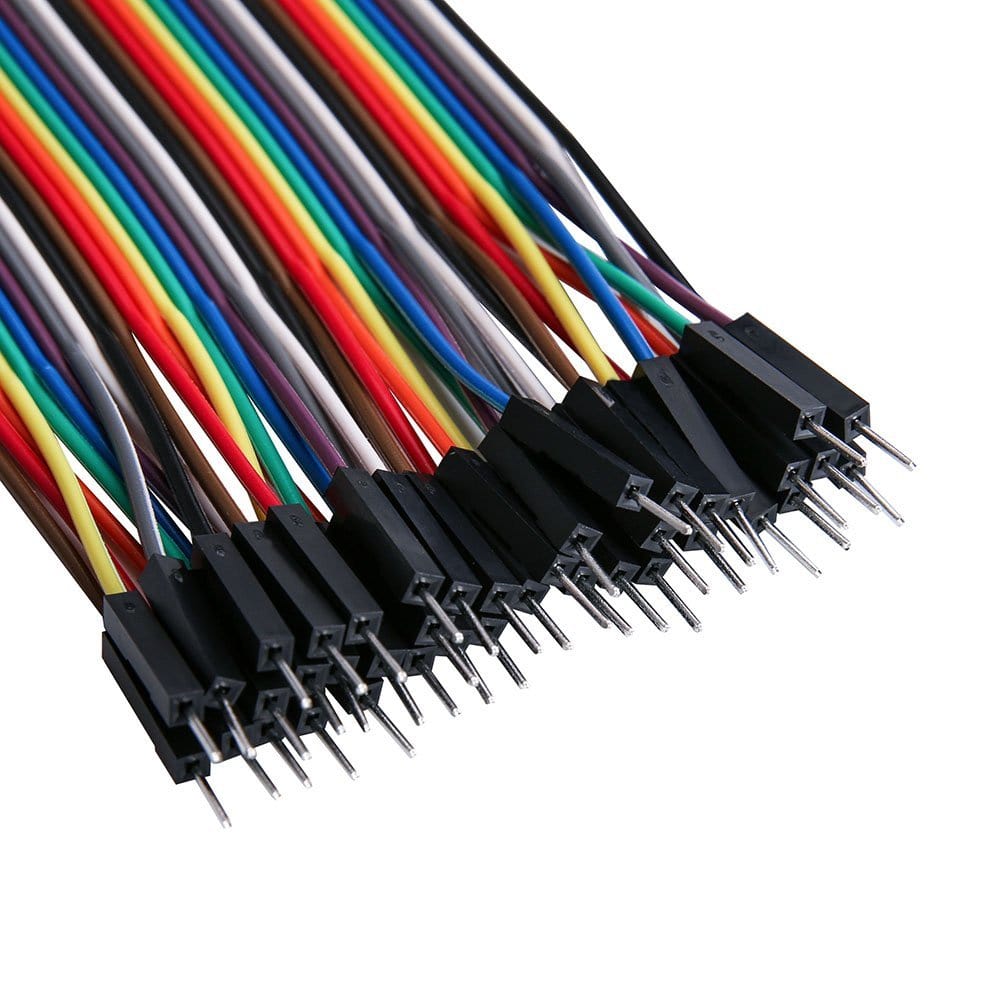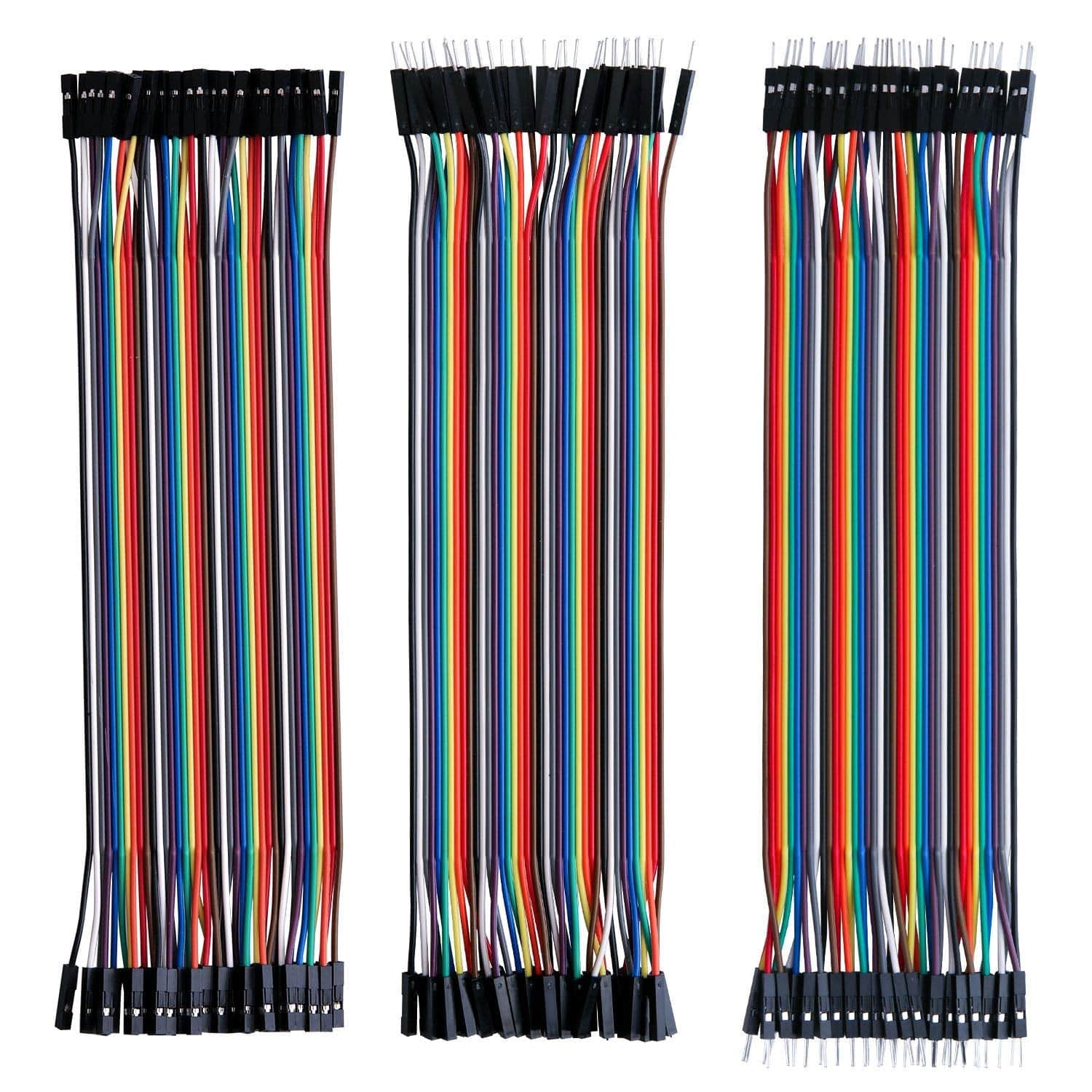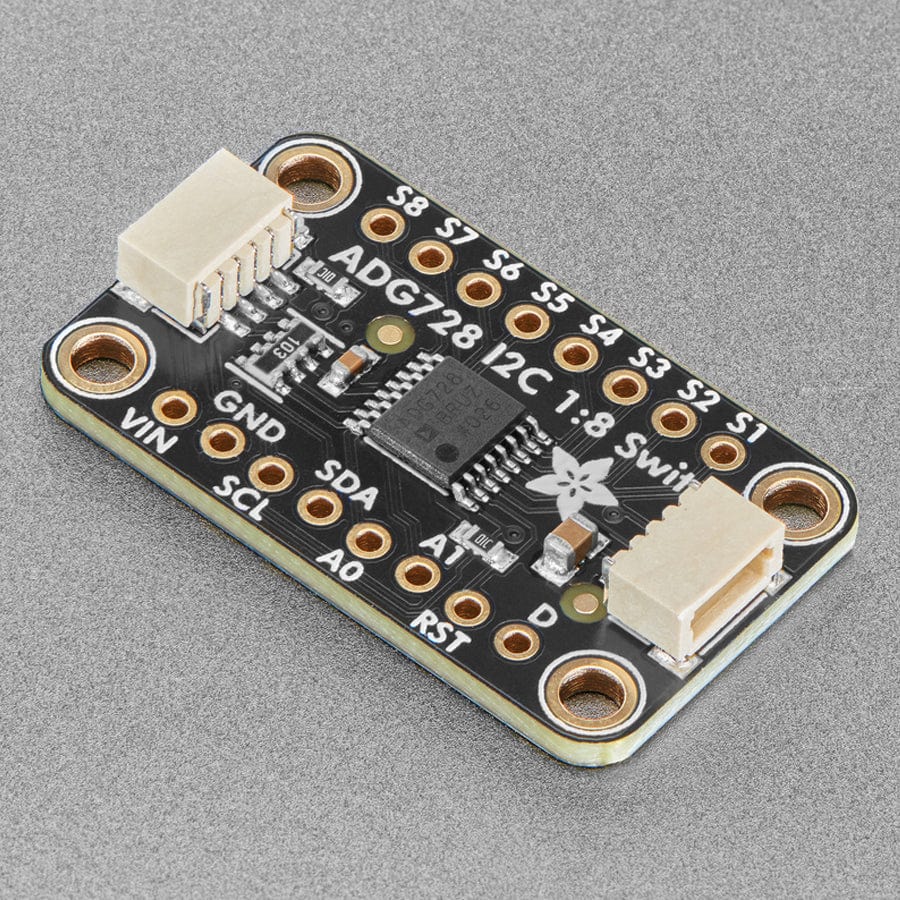
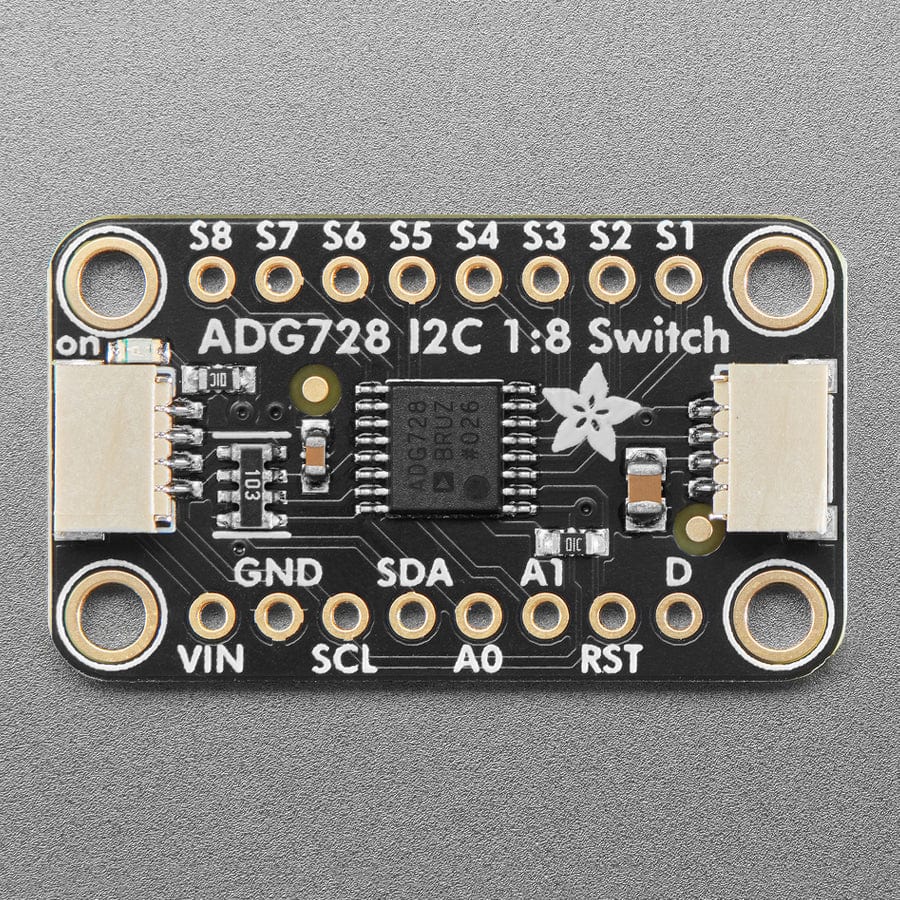
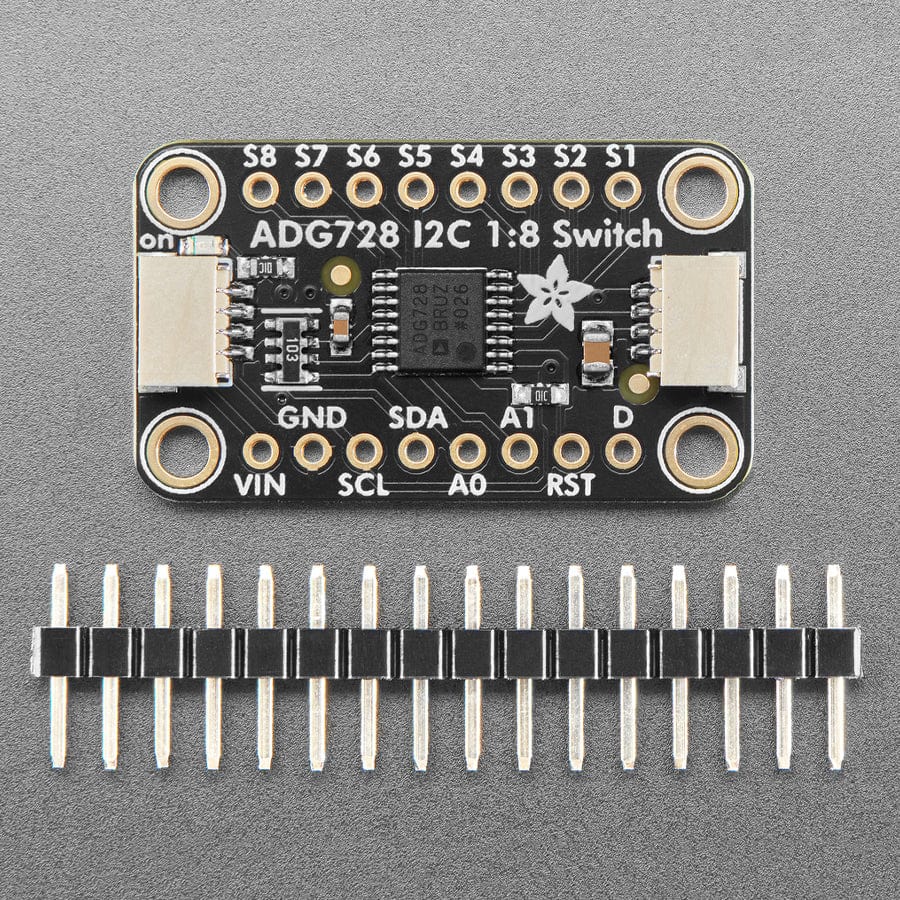
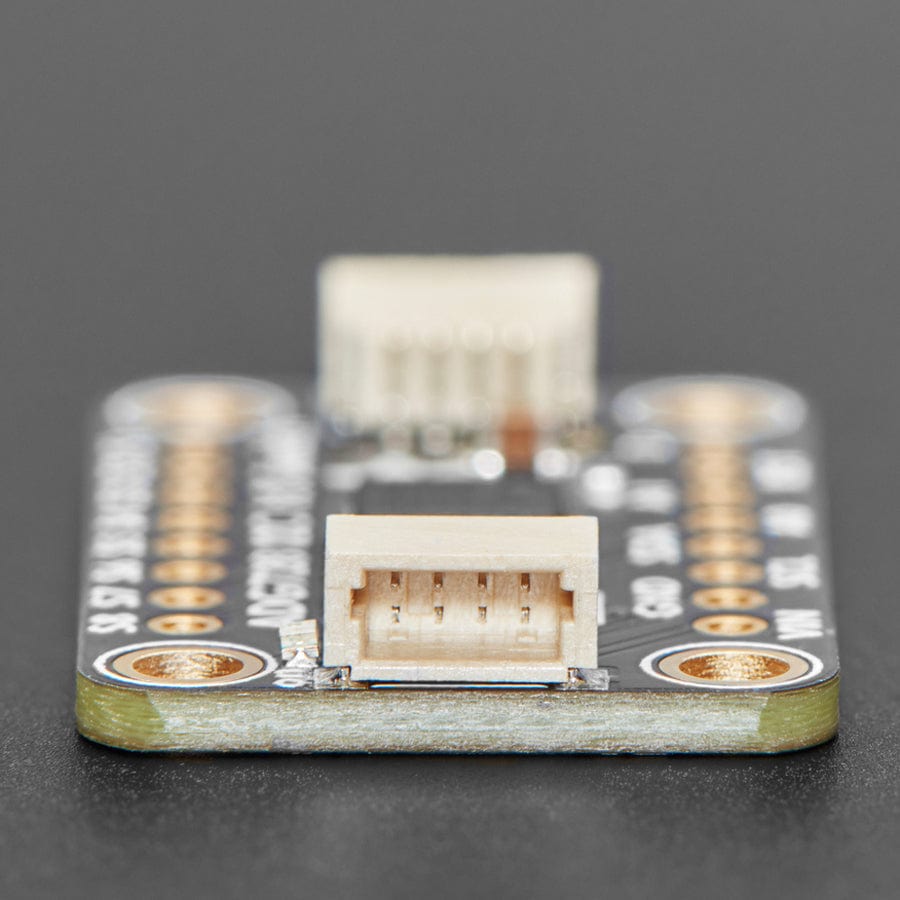
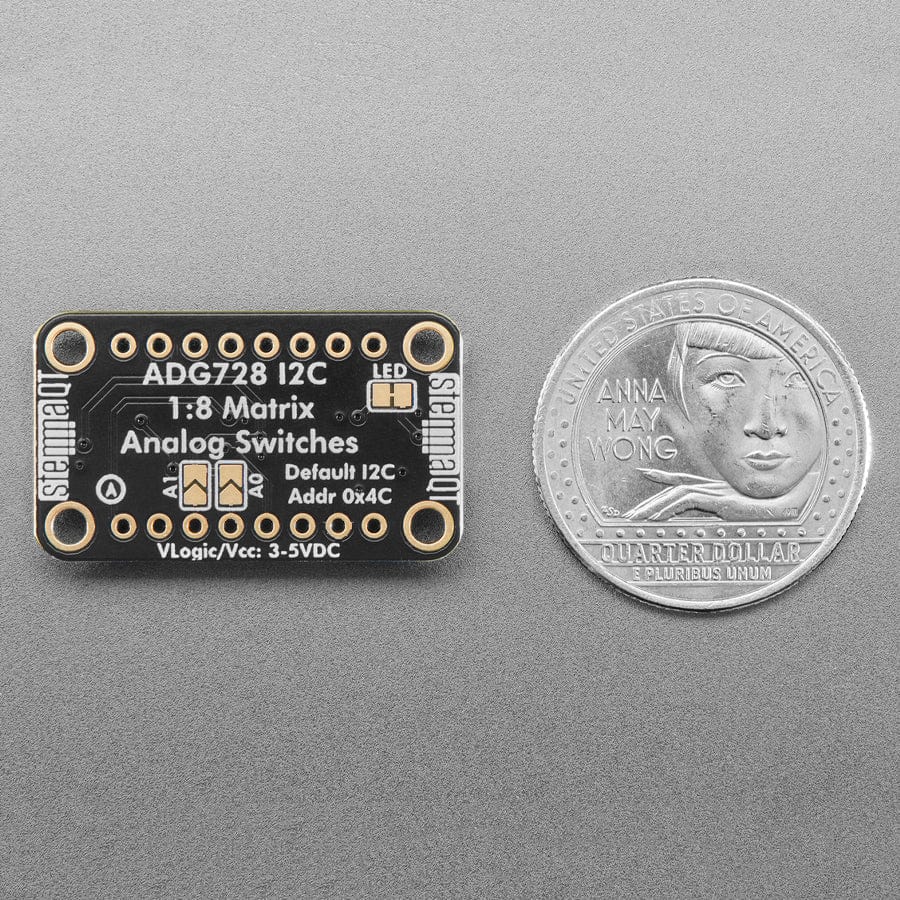
Login / Signup
Cart
Your cart is empty
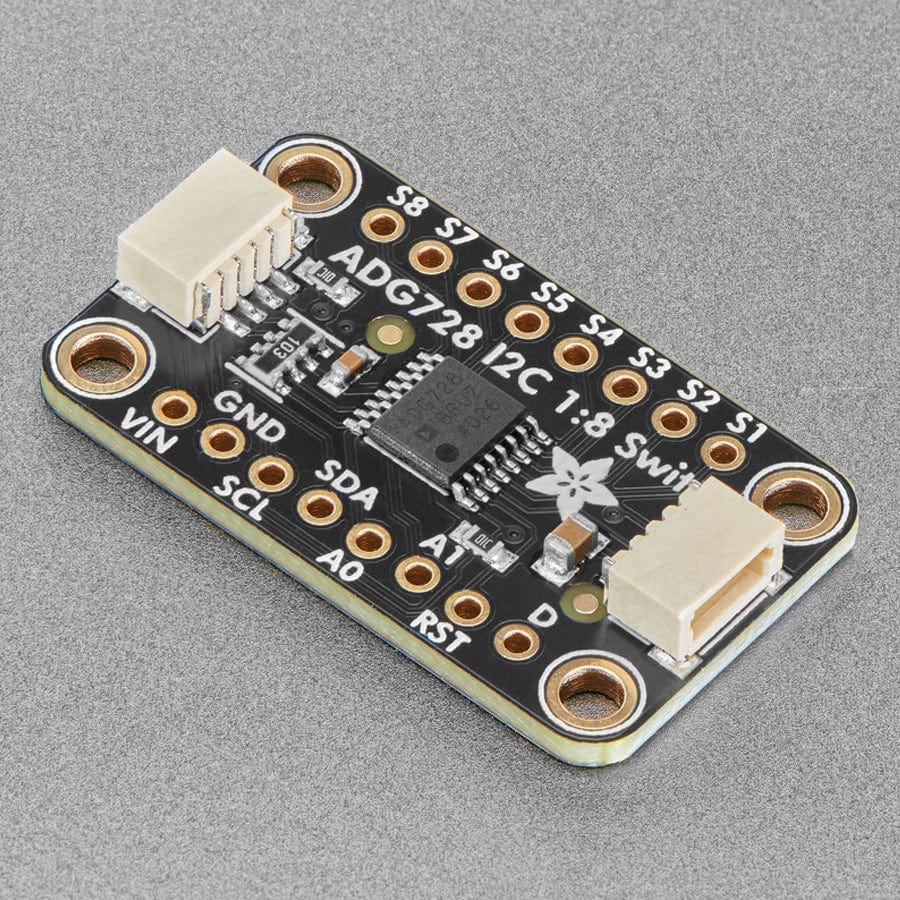
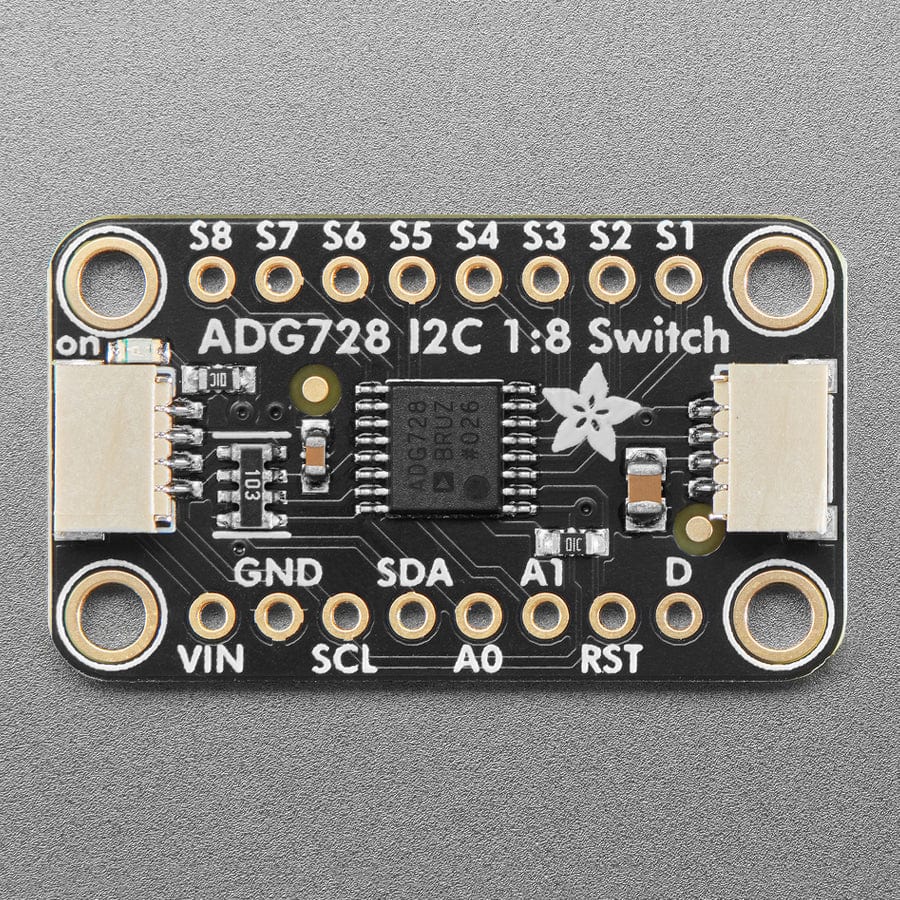
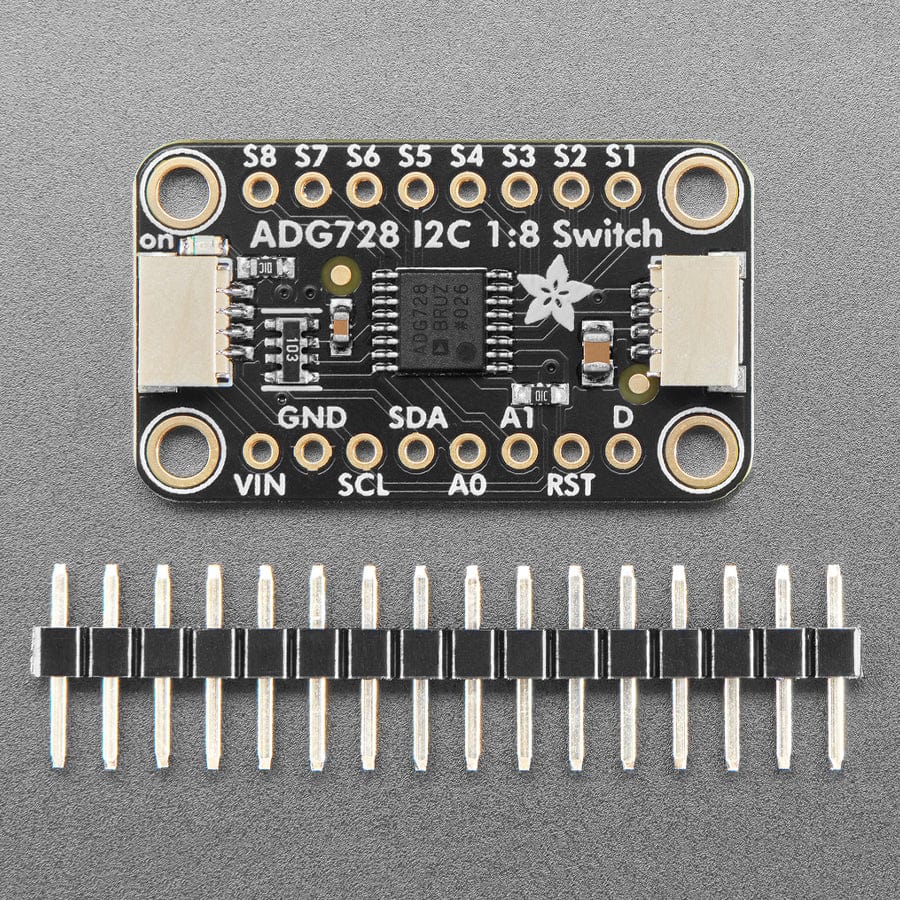
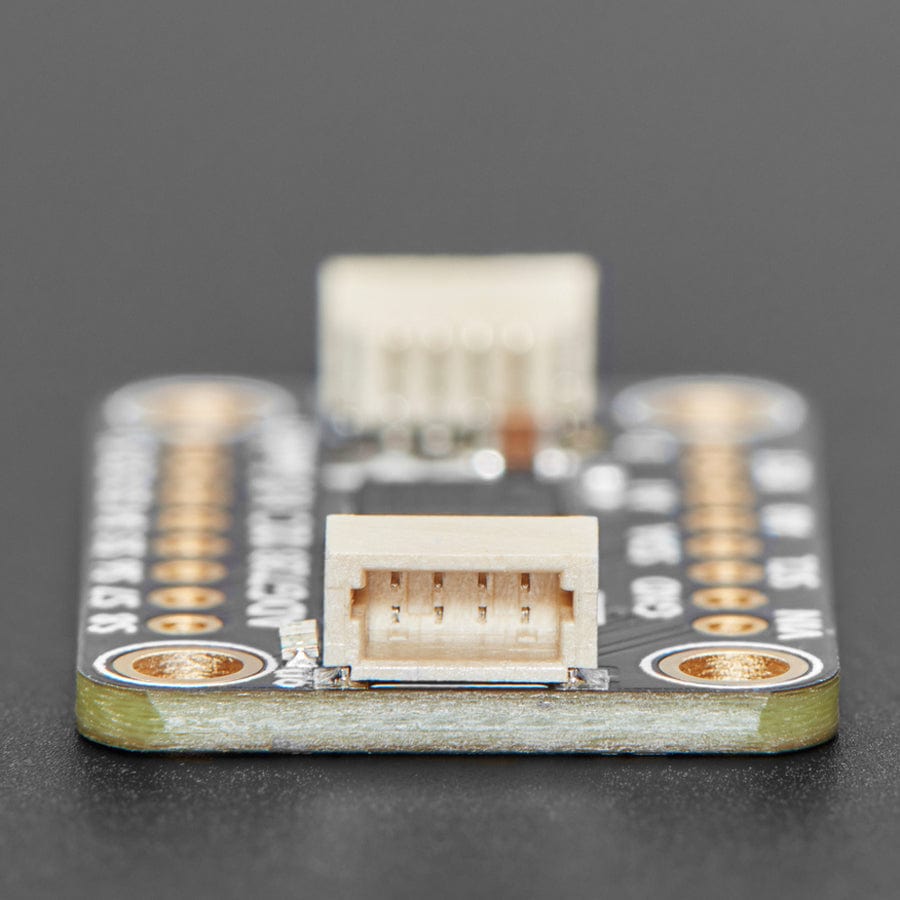
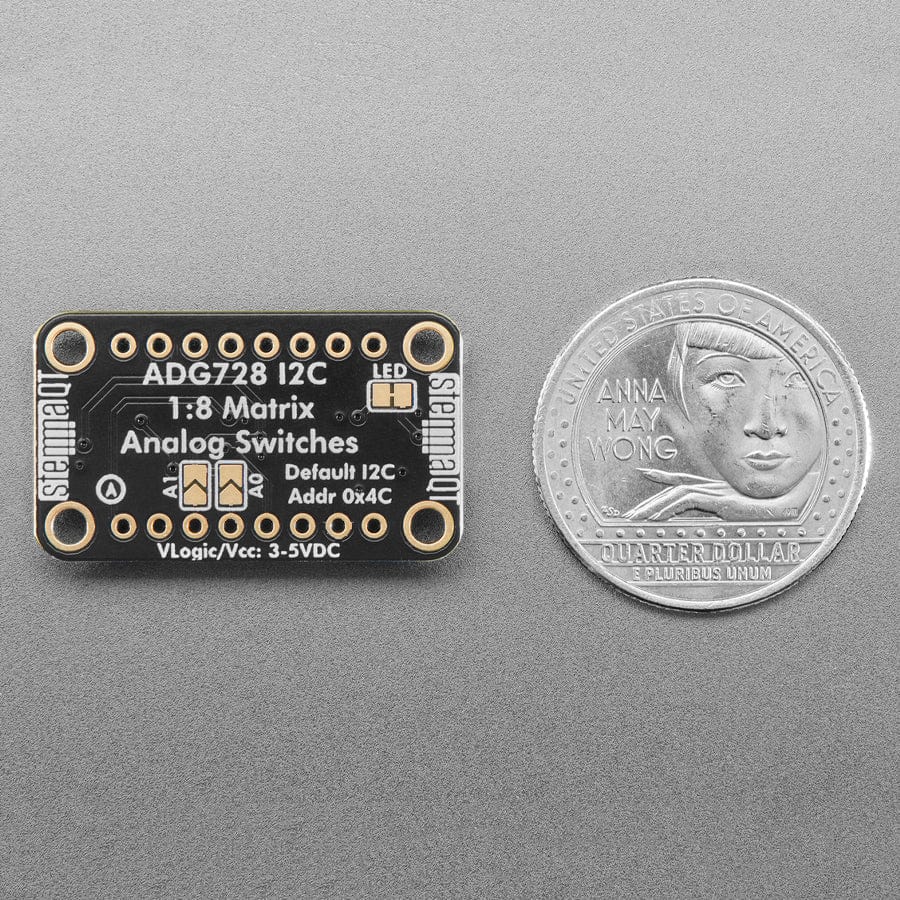
Analogue switches are a solid-state alternative to relays when you want a smaller, lower-power technology that won't wear out mechanically. And, as the name implies, you can use the Adafruit ADG728 1-to-8 Analog Matrix Switch to connect between eight analogue signals, much like a set of 8 mechanical switches. These chips tend to be tiny surface mount parts, so this breakout will let anyone use the ADG728 switch for signals up to 5V, without fiddly soldering.
The ADG728 uses I2C to select which of the 8 channels switches to turn on or off, to connect that channel to the single analogue 'D' pin Note that, unlike digital switches and multiplexers, these are not 'input' and 'output' because the signal is bidirectional. You could have the D signal be an input to 8 outputs or the 8 inputs to one output.
Also, the ADG728 isn't really a 'selecting multiplexer', it's a matrix switch with 8 independent switches. That means that yes, you could treat it like an SP8T where you select which signal is routed to the D pin, you can also turn on multiple switches to 'merge' the signals together.
Unlike a relay or mechanical switch, analogue switches don't wear out, and the switch time is near instant, about 100nS. The ADG728 chip also guarantees break-before-make so the deselected switches will open before selected switches close.
However, there are a few things to watch out for:
To get you going fast, we spun up a custom-made PCB in the STEMMA QT form factor, making it easy to interface with. The STEMMA QT connectors on either side are compatible with the SparkFun Qwiic I2C connectors. This allows you to make solderless connections between your development board and the ADG or to chain it with a wide range of other sensors and accessories using a compatible cable.
We also have a 1-to-4 Analogue Matrix Switch here






